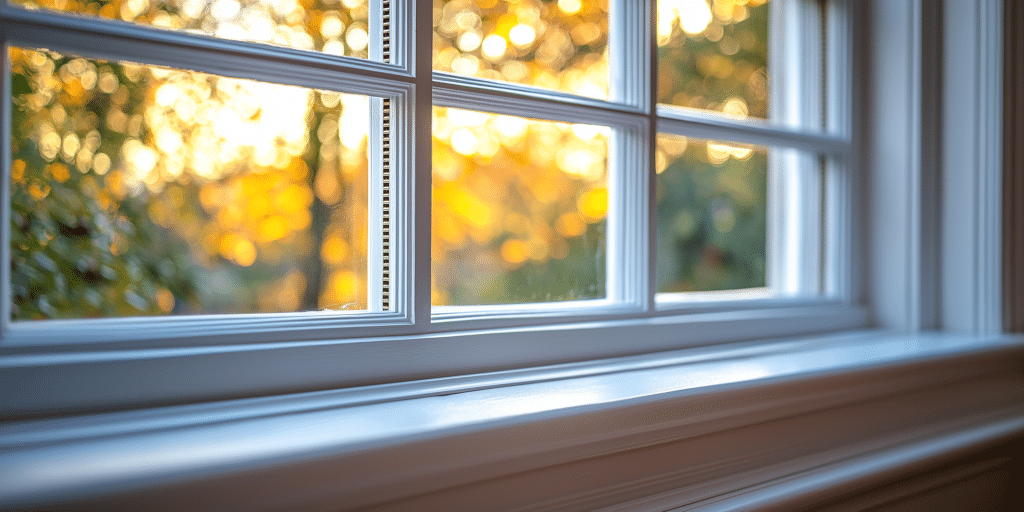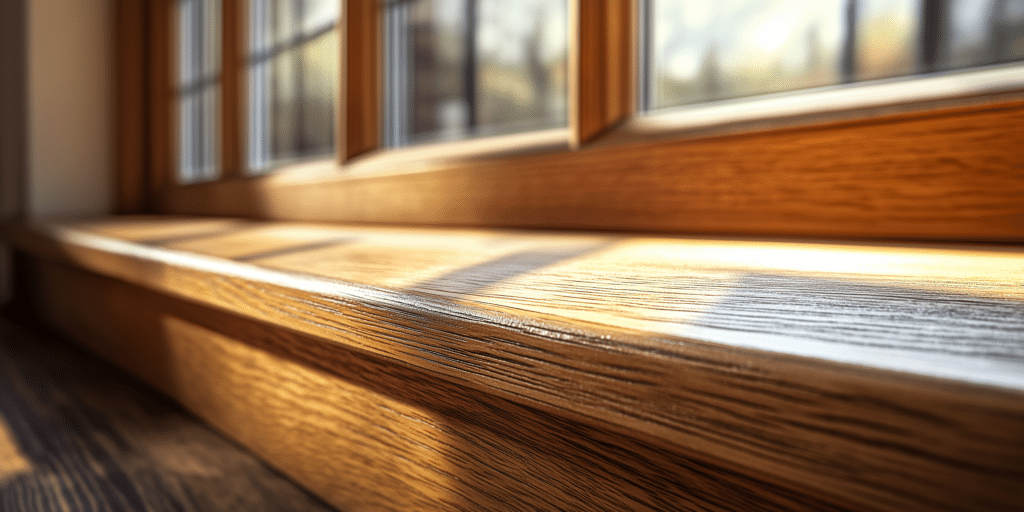Introduction to Sash Windows Weather Stripping

Weather stripping for sash windows typically involves the installation of durable, flexible materials such as silicone, rubber, or brush seals around the moving parts of the window. This creates an airtight seal, effectively blocking air infiltration and reducing thermal transfer. The technical specifications of weather stripping materials include resistance to UV radiation, flexibility at low temperatures, and a lifespan of up to 15 years, depending on exposure conditions.
Studies show that effective weather stripping can reduce energy loss through windows by up to 40%, significantly impacting heating bills and contributing to environmental sustainability.
The Importance of Weather Stripping for Sash Windows in Heritage Properties
In heritage properties, maintaining the historical integrity of sash windows while improving energy efficiency can be a delicate balance. Weather stripping offers a solution that enhances the thermal performance of sash windows without compromising their aesthetic value. This is crucial because older buildings often lack the insulation found in modern constructions, making them more susceptible to heat loss.
One of the main concerns for owners of heritage properties is whether weather stripping will alter the appearance of their sash windows. Fortunately, modern weather stripping solutions are designed to be unobtrusive, ensuring that the windows retain their historical charm while providing modern-day energy efficiency benefits. This is particularly important for listed buildings, where any alteration must be carefully considered to preserve the building’s character. Experts in heritage window restoration,, emphasize the importance of choosing materials that blend seamlessly with the original design, ensuring that the historical value of the property is maintained.
How Weather Stripping Works: Mechanism and Benefits
Weather stripping functions by creating a tight seal around the edges of sash windows, preventing drafts, moisture ingress, and heat loss. This seal is achieved using materials like silicone, rubber, or brush seals, which are installed along the meeting rails, stiles, and parting beads of the window. These materials are chosen for their durability, flexibility, and ability to withstand various weather conditions.
The benefits of weather stripping extend beyond just energy efficiency. By preventing moisture ingress, weather stripping also helps to protect the structural integrity of the window frame, reducing the likelihood of wood rot and other damage. Additionally, it minimises external noise, providing a more comfortable indoor environment. The technical specifications of weather stripping materials are crucial to their performance, with factors such as UV resistance, temperature flexibility, and lifespan playing significant roles in their effectiveness. Effective weather stripping can match the performance of new insulated windows, especially when paired with storm windows.
Types of Weather Stripping Materials for Sash Windows

When it comes to weather stripping for sash windows, there are several material options available, each with its own set of advantages and suitability for different applications:
- Silicone: Known for its flexibility and durability, silicone weather stripping is ideal for windows that experience significant movement. It’s resistant to extreme temperatures and UV radiation, making it a long-lasting choice.
- Rubber: Rubber weather stripping is another popular option, offering excellent insulation properties and a strong seal against drafts. It is commonly used in situations where a tight seal is necessary to prevent air leaks.
- Brush Seals: Brush seals are typically used in older or heritage sash windows where preserving the aesthetic is crucial. They provide a good seal without being too intrusive and are particularly effective in preventing dust and dirt ingress. Brush seals can reduce energy loss by up to 30% in heritage properties.
- Foam Tape: Foam tape is an affordable and easy-to-install option, often used in DIY projects. However, it may not last as long as silicone or rubber, making it more suitable for temporary solutions.
Step-by-Step Guide to Installing Weather Stripping on Sash Windows
Installing weather stripping on sash windows is a straightforward process that can be undertaken as a DIY project with the right tools and materials. Here’s a step-by-step guide to help you through the process:
- Measure the Window Sash and Surrounding Frame Accurately: Begin by measuring the dimensions of your window sash and the surrounding frame where the weather stripping will be applied. Accurate measurements ensure that the weather stripping fits perfectly, providing an effective seal.
- Select the Appropriate Weather Stripping Material: Based on your measurements and the specific needs of your windows, choose the most suitable weather stripping material. Consider factors such as durability, flexibility, and resistance to environmental conditions.
- Clean and Prepare the Window Surfaces: Before applying the weather stripping, thoroughly clean the window surfaces where the material will be installed. Remove any dust, dirt, or old paint to ensure that the weather stripping adheres properly.
- Carefully Apply the Weather Stripping: Starting at the top of the window, carefully apply the weather stripping along the edges, ensuring that it adheres firmly without obstructing the window’s movement. If using adhesive-backed materials, press firmly to ensure a good bond.
By following these steps, you can significantly improve the energy efficiency of your sash windows and reduce drafts, moisture ingress, and external noise. Professional systems involving machining draught seals into the sashes offer the most durable solutions.
Common Mistakes to Avoid When Installing Weather Stripping
While installing weather stripping on sash windows is generally straightforward, there are some common mistakes that can compromise its effectiveness:
- Incorrect Measurements: Failing to measure the window accurately can lead to gaps or overlaps in the weather stripping, reducing its effectiveness. Always double-check your measurements before cutting and applying the material.
- Using Inappropriate Materials: Not all weather stripping materials are suitable for every type of sash window. Using a material that is too rigid or not durable enough for your window’s specific needs can result in a poor seal and decreased energy efficiency.
- Poor Surface Preparation: Applying weather stripping to dirty or uneven surfaces can prevent it from adhering properly. Make sure the window surfaces are clean and smooth before installation.
- Obstructing Window Movement: It’s essential to ensure that the weather stripping does not interfere with the operation of the sash window. Overly thick or improperly placed stripping can make the window difficult to open or close.
Avoiding these common pitfalls will ensure that your weather stripping is effective and long-lasting, providing maximum energy efficiency benefits. Regular inspection and maintenance of the seals can prevent small issues from becoming major problems.
How to Maintain and Replace Weather Stripping on Sash Windows

Maintaining your weather stripping is essential to ensure its continued effectiveness in sealing your sash windows. Regular maintenance checks can prevent minor issues from becoming significant problems:
- Regular Inspections: Periodically inspect the weather stripping for signs of wear and tear, such as cracks, hardening, or loss of flexibility. Early detection of issues allows for timely repairs or replacement.
- Cleaning the Weather Stripping: Dirt and debris can accumulate on the weather stripping, reducing its effectiveness. Gently clean the stripping with a damp cloth and mild detergent to maintain its integrity.
- Lubricating Moving Parts: If the weather stripping includes moving parts, such as brush seals, occasional lubrication can help maintain smooth operation and prolong the lifespan of the material.
- Replacing Worn Weather Stripping: Over time, weather stripping materials will degrade and lose their effectiveness. Replace worn stripping with the same material type to ensure a consistent seal and maintain energy efficiency.
By following these maintenance tips, you can extend the lifespan of your weather stripping and ensure that your sash windows continue to provide a strong barrier against drafts and moisture. Maintaining weather stripping is a simple yet effective way to keep the drafts out and your heating bills down.
Benefits of Weather Stripping for Sash Windows
- Enhanced Energy Efficiency: By preventing drafts and reducing heat loss, weather stripping can significantly lower your energy bills. It helps maintain a stable indoor temperature, reducing the need for constant heating or cooling. A 2021 study by the Energy Saving Trust found that homes with properly installed weather stripping can reduce heating costs by up to 15% annually.
- Increased Comfort: A well-sealed window prevents cold drafts and external noise, creating a more comfortable indoor environment. This is particularly beneficial in older homes where insulation may be lacking. Dr. Alice Stewart, an environmental architect, mentions, “Weather stripping not only enhances thermal comfort but also significantly reduces noise pollution, making living spaces more pleasant.”
- Preservation of Window Integrity: Weather stripping protects the window frame from moisture ingress, reducing the risk of wood rot and other structural damage. This helps to preserve the longevity and appearance of your sash windows. According to the UK National Trust, proper weather stripping can extend the lifespan of wooden sash windows by up to 20 years.
- Cost-Effective Home Improvement: Weather stripping is a relatively low-cost home improvement that offers immediate returns in terms of energy savings and comfort. It’s also a DIY-friendly project, making it accessible to most homeowners. A report from Which? magazine states that weather stripping is one of the most cost-effective methods for reducing energy bills, with a return on investment in as little as two years.
Environmental Impact of Weather Stripping: A Sustainable Choice
Weather stripping not only improves energy efficiency but also contributes to environmental sustainability by reducing the overall carbon footprint of your home. Here’s how:
- Reduction in Energy Consumption: By sealing gaps around sash windows, weather stripping reduces the amount of energy required to heat or cool your home. This reduction in energy consumption translates directly into lower greenhouse gas emissions. The Carbon Trust estimates that well-maintained weather stripping can cut carbon emissions by approximately 10-15% in an average household.
- Sustainable Materials: Many modern weather stripping materials are made from environmentally friendly sources or are recyclable. Choosing sustainable materials further reduces the environmental impact of your home improvement projects. Professor David Green, a sustainability expert, notes, “Using eco-friendly weather stripping materials not only helps in energy conservation but also supports the broader goal of reducing plastic waste and environmental degradation.”
- Longevity of Windows: Weather stripping helps to preserve the condition of your windows, reducing the need for frequent replacements. This not only saves resources but also minimises waste. The Building Research Establishment (BRE) suggests that extending the life of windows through proper maintenance can reduce the need for new materials by up to 30%.
- Support for Eco-Friendly Living: By improving your home’s energy efficiency, weather stripping supports a more sustainable and eco-friendly lifestyle. It aligns with broader efforts to reduce energy consumption and promote environmental responsibility. The UK Green Building Council advocates for the widespread adoption of weather stripping as a key strategy in achieving net-zero carbon emissions in residential buildings.
Final Thoughts: Why Weather Stripping is a Must for Sash Windows

Whether you’re looking to preserve the historical character of your home or simply want to improve its energy efficiency, weather stripping is a smart investment that pays off in multiple ways.
Weather stripping is one of the most impactful yet non-invasive methods to enhance the efficiency of sash windows without compromising their historical value. Don’t wait—take the first step towards a more comfortable and energy-efficient home by installing weather stripping on your sash windows today.




